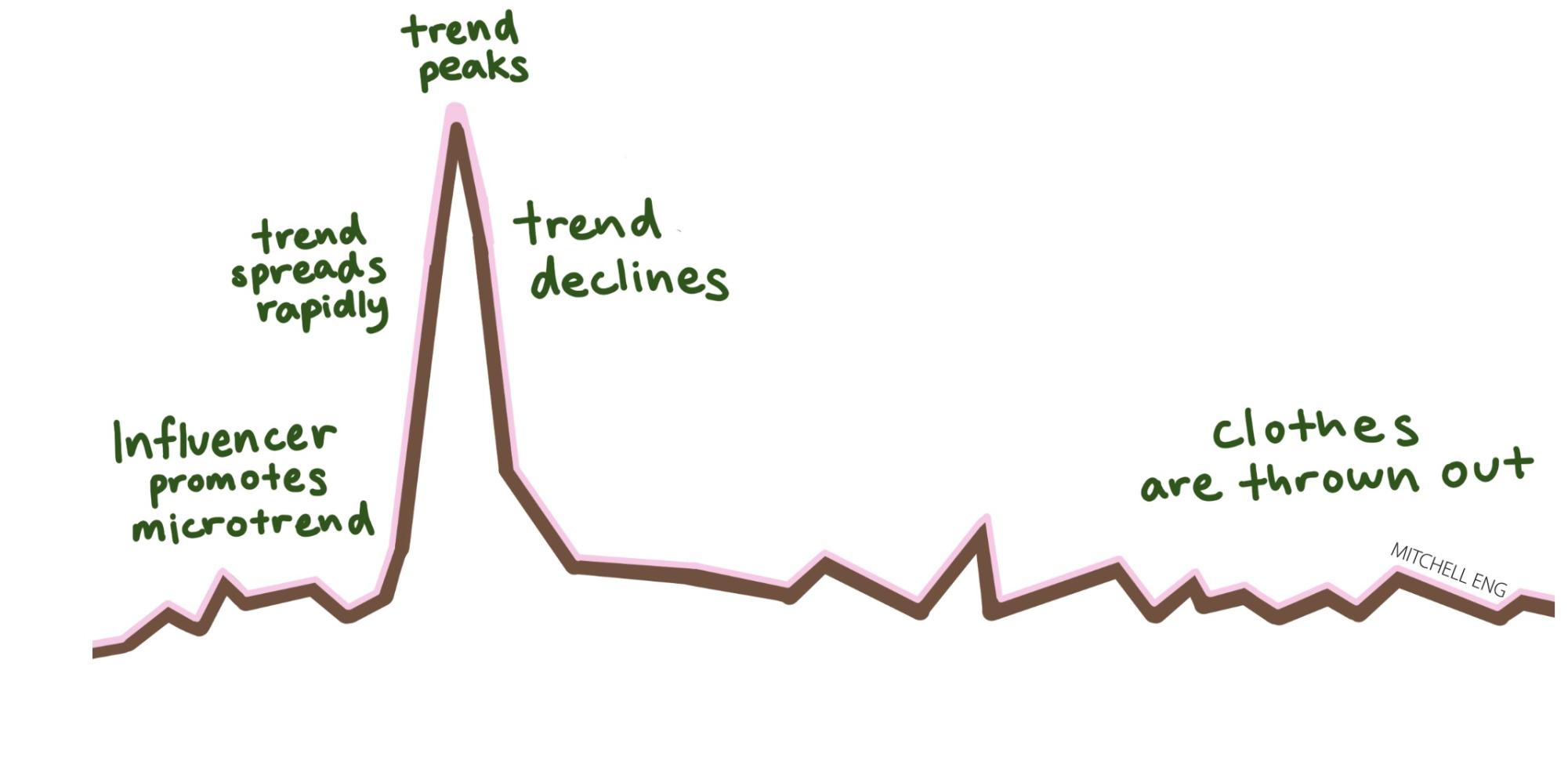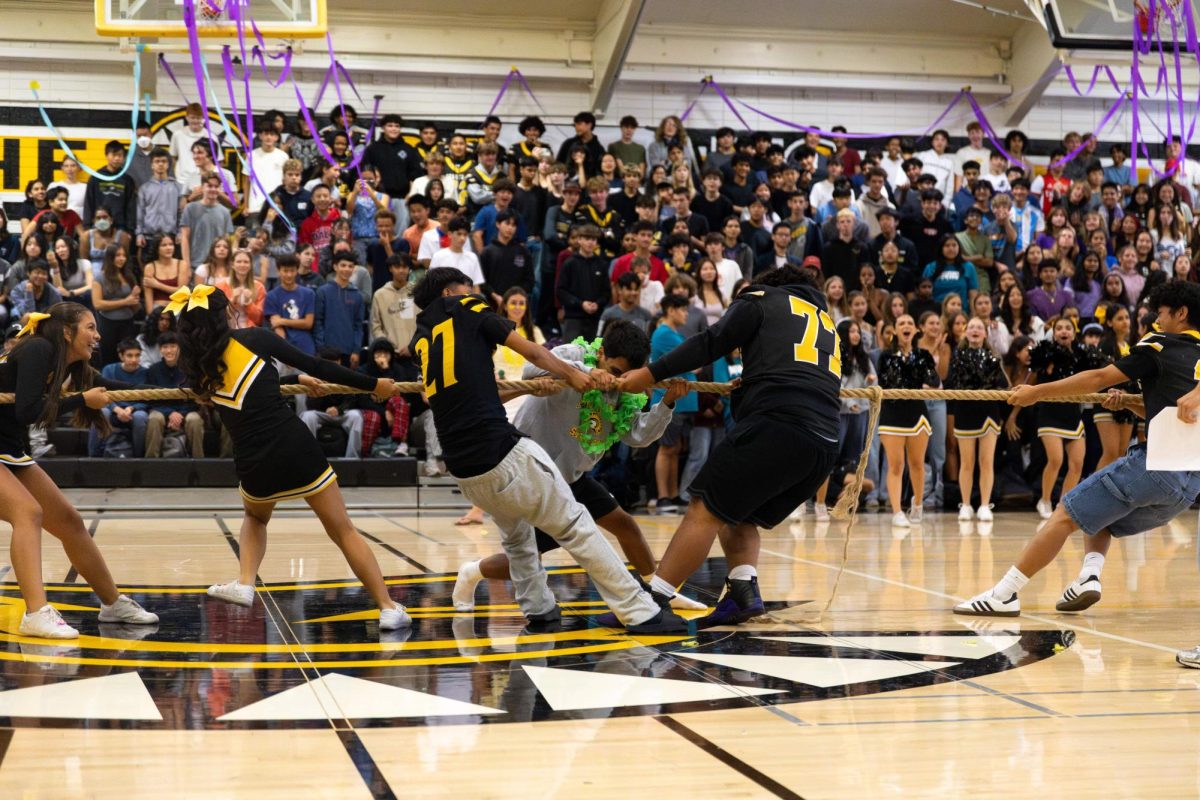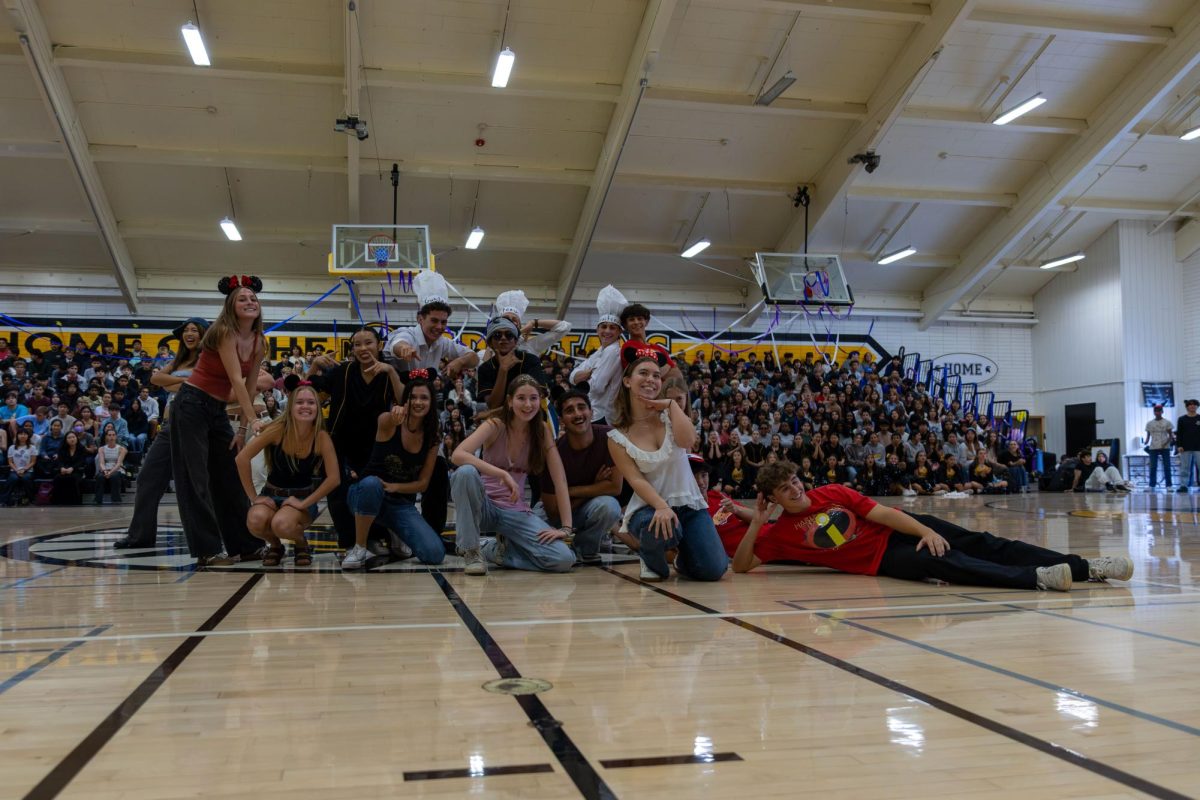 Pink satin bows. Adidas Sambas. Jorts. Babytees. Overly baggy jeans. The rapid increase in popularity of your favorite niche Pinterest-board pieces fall under the term “microtrend.” As defined by the Harvard Crimson, microtrends are styles that rise quickly in popularity, but often die out just as quickly. However, these short-lived trends can contribute to a wide range of effects on the environment, consumers’ wallets, and a weakened sense of personal identity.
Pink satin bows. Adidas Sambas. Jorts. Babytees. Overly baggy jeans. The rapid increase in popularity of your favorite niche Pinterest-board pieces fall under the term “microtrend.” As defined by the Harvard Crimson, microtrends are styles that rise quickly in popularity, but often die out just as quickly. However, these short-lived trends can contribute to a wide range of effects on the environment, consumers’ wallets, and a weakened sense of personal identity.
Social Media
Freshman Emily Resheff believes that Pinterest plays a key role in discovering microtrends. Resheff said that microtrends and social media platforms go “hand-in-hand” in helping users discover new styles and clothing pieces.
“You’ll see a celebrity wear it then it just trickles down,” Resheff said. “ [Then] You see someone on the street wearing it, and then it goes away in a few weeks.”
Trends often emerge from influencers creating content designed to go viral, Junior Katy said. Yu said influencers are significant promoters of microtrends due to signing sponsorship deals with fashion brands. They earn high paychecks in exchange for promoting certain fashion items or brands on their social media accounts.
Sometimes, influencers will attach links that allow users to purchase items directly from their posts, making it even easier to tap into a trend, Yu said. The motivation behind promoting brands isn’t necessarily due to an authentic love for the item, but rather a desire to earn the commission that results from sponsoring for the brand, she said.
“[Influencers are] getting paid to do something they don’t genuinely like,” Yu said.
Senior Abel Castaño said that social media accounts and close friends can also influence style choices. Castaño said that he notices many people in friend groups dressing very similarly to one another, and that close friends may inspire people to make choices about fashion.

“The more you interact with social media, the more [it’s going to] know about your taste,” Castaño said. “It’s like a snowball [effect].”
It’s no secret that young people are frequent users of social media. According to a survey conducted by the Pew Research Center, 96% of U.S. teens are on the internet every single day. More time spent on social media results in algorithms becoming more focused on viewers’ preferences, leading to even more exposure to microtrends, Castaño said. This personalized feed can often lead to consumers participating in microtrends.
Senior Addy Kopp said she usually finds out about new clothing items through Instagram, TikTok, or VSCO.
“I see a cute post … and that hooks my interest,” Kopp said.
When she notices peers actively engaging in the trends she sees on these social media platforms, she feels a stronger inclination to engage in it.
A common consensus among students is that social media is not only a promoter of microtrends but can also be a source of pressure, making consumers feel behind and irrelevant to the modern fashion world. Resheff said that this added pressure can lower self-confidence, and pressure them to keep up with a continuously changing world.
Impact on Identity and Environment
Yu said that microtrends can influence people to focus on looking a certain way and feel compelled to keep up with peers. Individuals can be pressured by microtrends to fit a standard, building up potential fears of not fitting in, or being ridiculed for the way they dress.
Microtrends influence large crowds because of how easily consumers are inclined to follow them, Resheff said. She said that this is part of human nature, and that people want to “follow the crowd”.
“[A microtrend] draws you in by thinking, ‘Oh, everyone’s doing it. I should do it too,’” Resheff said.
Resheff said that she feels disposed to follow the styles others around her have at times. But, if she has a genuine interest towards an item, that is the driving force of why she wears it, not because of the pressure to fit in with others.
Kopp said that the majority of her peers are active on social media and revolve their identities around engagement on social media. This results in people feeling the need to fit into style standards based on what they view on social media platforms.
“Pressure, I think, is usually something that people don’t notice, but gets them to participate in the trends,” she said.
Kopp said that positives of participating in microtrends include helping students feel more confident and better about what they’re wearing. Microtrends also offer a level of certainty and comfort with fashion, Kopp said. Because many people are aware of them, it creates a safe, easily accessible way to feel confident in an outfit, she said.
However, people with unique outfits that don’t fit current trends may be perceived negatively compared to keeping up with current styles, Yu said. Peers may also view those who participate in microtrends as “basic” and having very similar styles to one another.
“If you avoid [microtrends]…people will view you not as a follower, but if you’re not wearing the right kind of things, then people won’t take notice to you as much, because they’re not used to what they’re seeing,” Yu said.
Resheff said that microtrends can have negative impacts on confidence because of how they continuously change standards to meet. The correlation between fashion and self esteem is clear; a constant desire to fit in can deprive one’s self worth and assurance.
“Fashion should give you confidence,” she said. “It shouldn’t make you feel like you’re not good enough.”
Microtrends also pose a threat to the environment due to the fast pace of microtrend cycles, where enormous amounts of waste are generated. A consumer may purchase an item they find on social media, wear the item a few times, then forget about what they bought, because it’s out of style. As a result, clothes are tossed away after very short periods of time, creating quick-turning cycles of waste. According to earth.org, around 11.3 million tons of textile waste is dumped into landfills annually, equivalent to around 81.5 pounds per U.S. consumer.
Yu said that the constant replacement of throwing out clothes is harmful, and negatively affects the consumer financially, and the earth sustainably.
“It’s a bad cycle that damages your wallet and the environment,” she said.
Maintaining Individuality and possible solutions
Resheff said that a positive about microtrends is that they can bring a variety of new options and ideas to the fashion world, broadening consumer’s tastes and personal styles. To maintain authenticity with her personal style and not have it solely revolve around the latest trends, Resheff said she is influenced by vintage runway shows from decades as early as the 1920s, all the way to the 1990s.
“[They give] me a pretty good sense of what I do and don’t like in fashion because I got such a broad spectrum of [information],” she said.
Resheff said she recommends people look into thrifting or ask family members about second-hand clothing items for an ethical and eco-friendly, but also fun fashion solution. Both Kopp and Yu also said that they frequently thrift, often finding a variety of options to choose from and experiment with, all for a lower financial and environmental cost.
“Be okay with taking risks [and] not wearing what everyone else is wearing,” Kopp said.
Good on You is an app which is helpful to determine the ethicality and sustainability of stores, Kopp said. It’s a great option for those looking to expand their wardrobe all while keeping sustainability in mind, she said.
Yu said that people can even find trendy, name-brand items in thrift stores, offering the ability to explore modern style, but not get sucked into the dangerous cycle of overspending and facing large byproducts of waste.
“You can get more bang for your buck,” Yu said.
Castaño said a significant reason he avoids participating in microtrends is because he wants to have a unique sense of style and doesn’t want to buy into certain brands or items solely because they are popular. He said a solution he has found for clothes he feels no longer fit current styles is to try to modify them. By cutting and sewing new pieces of fabric, and experimenting with multiple combinations and colors, Castaño said he tries various ideas with styling his clothes.
Castaño said he recommends experimenting with styles, and not being afraid to only follow one fashion style, for people who may feel the need to always keep up with the latest trends to fit in with the crowd.
“Try as much as possible,” Castaño said. “You can have different styles at the same time.”
*This article was also published in our print edition.
































